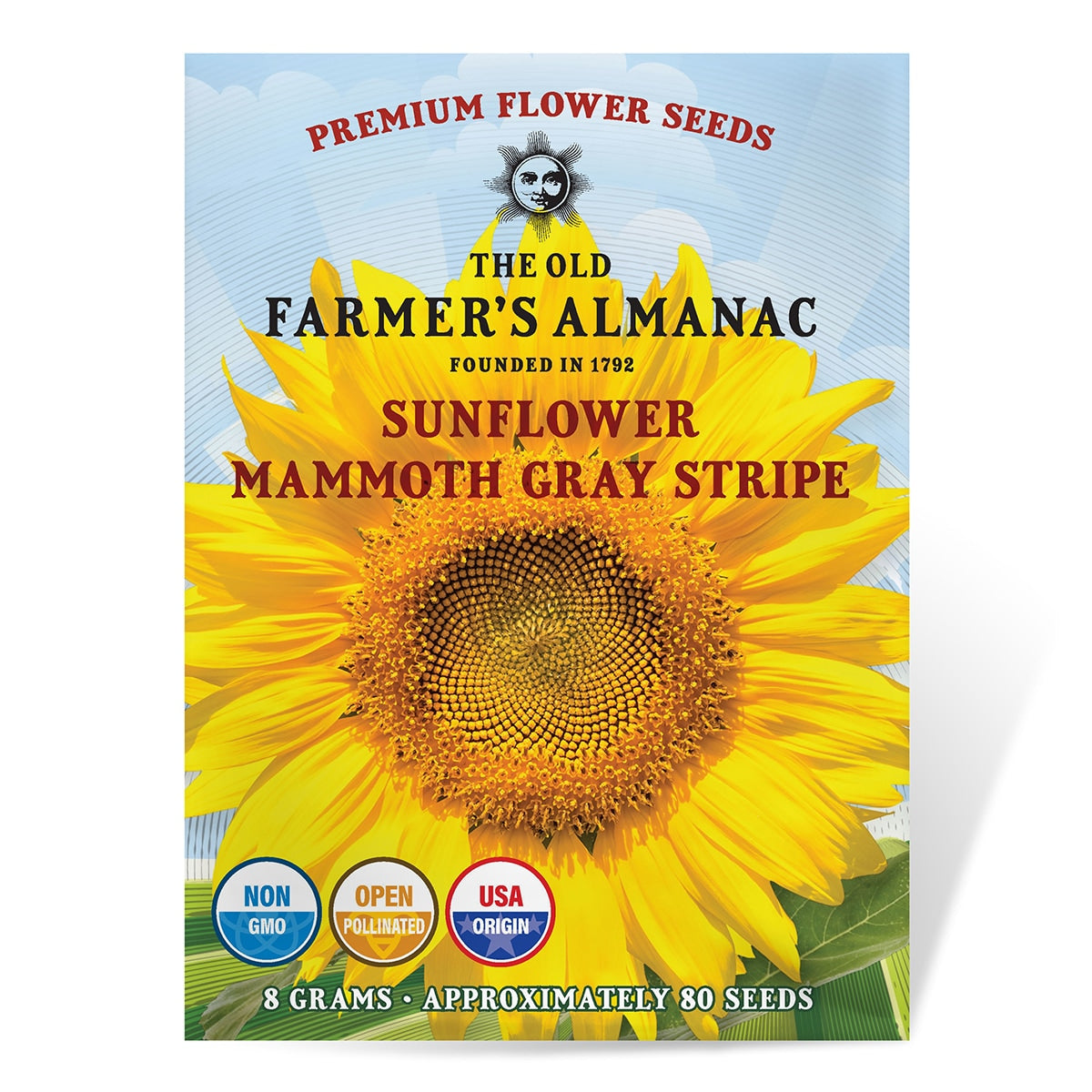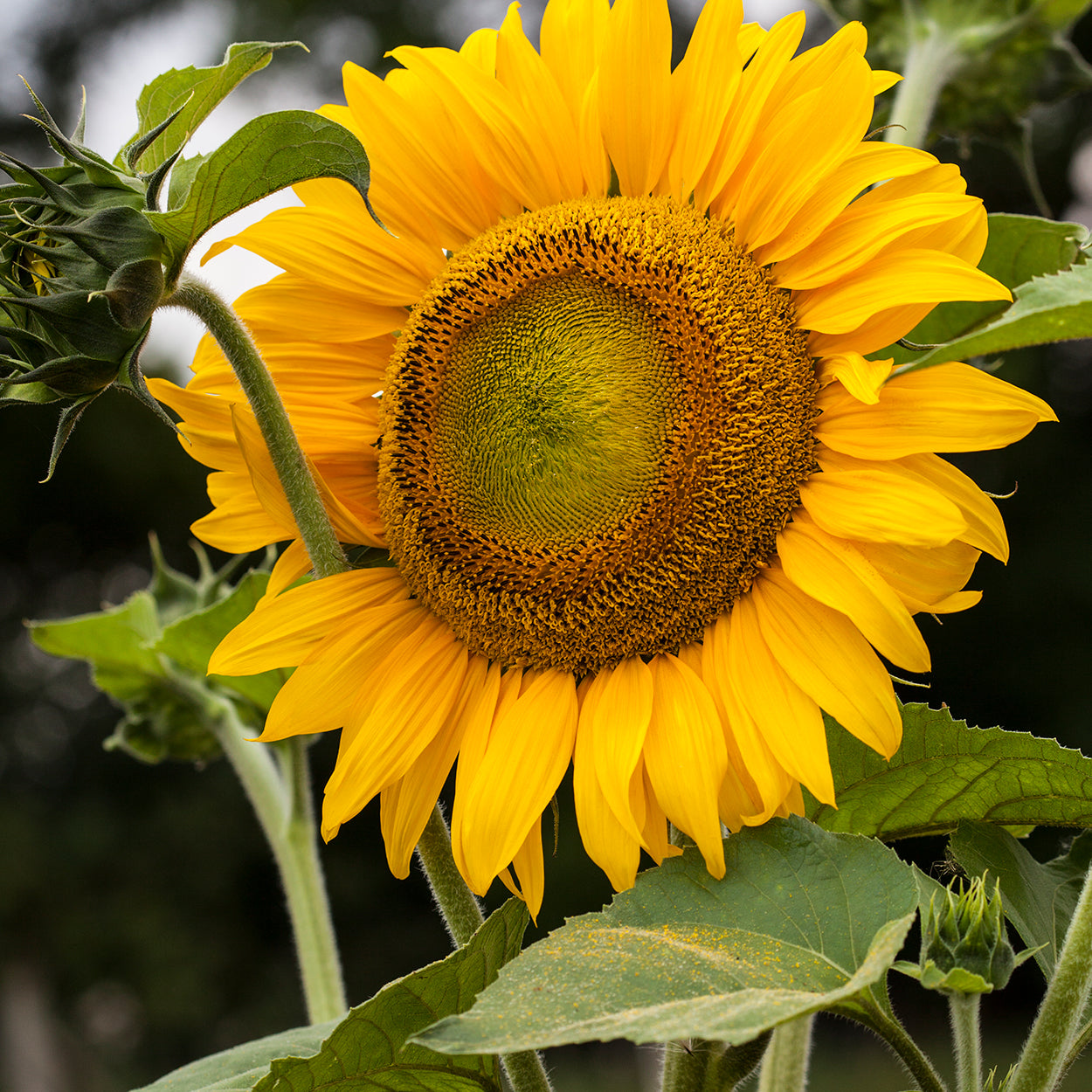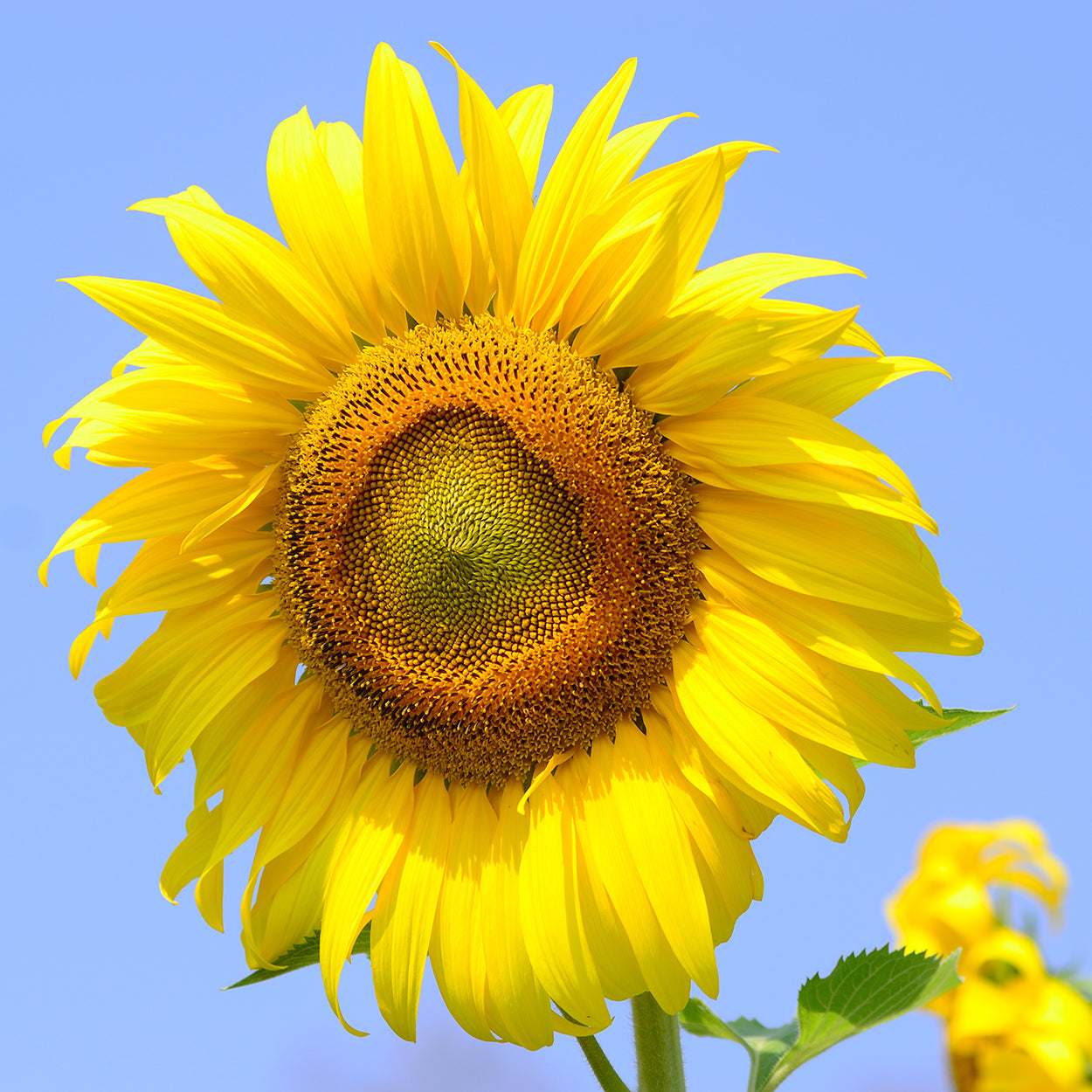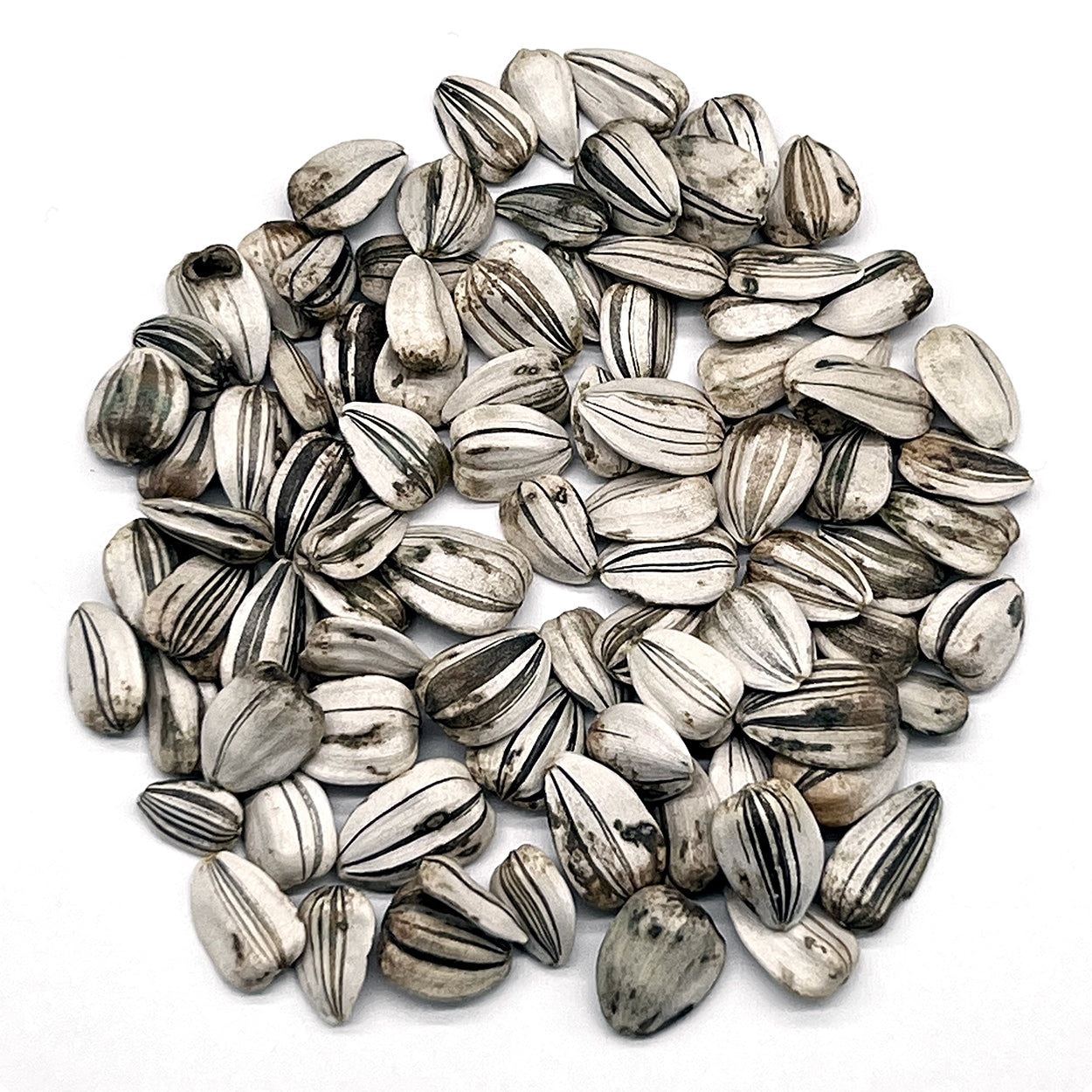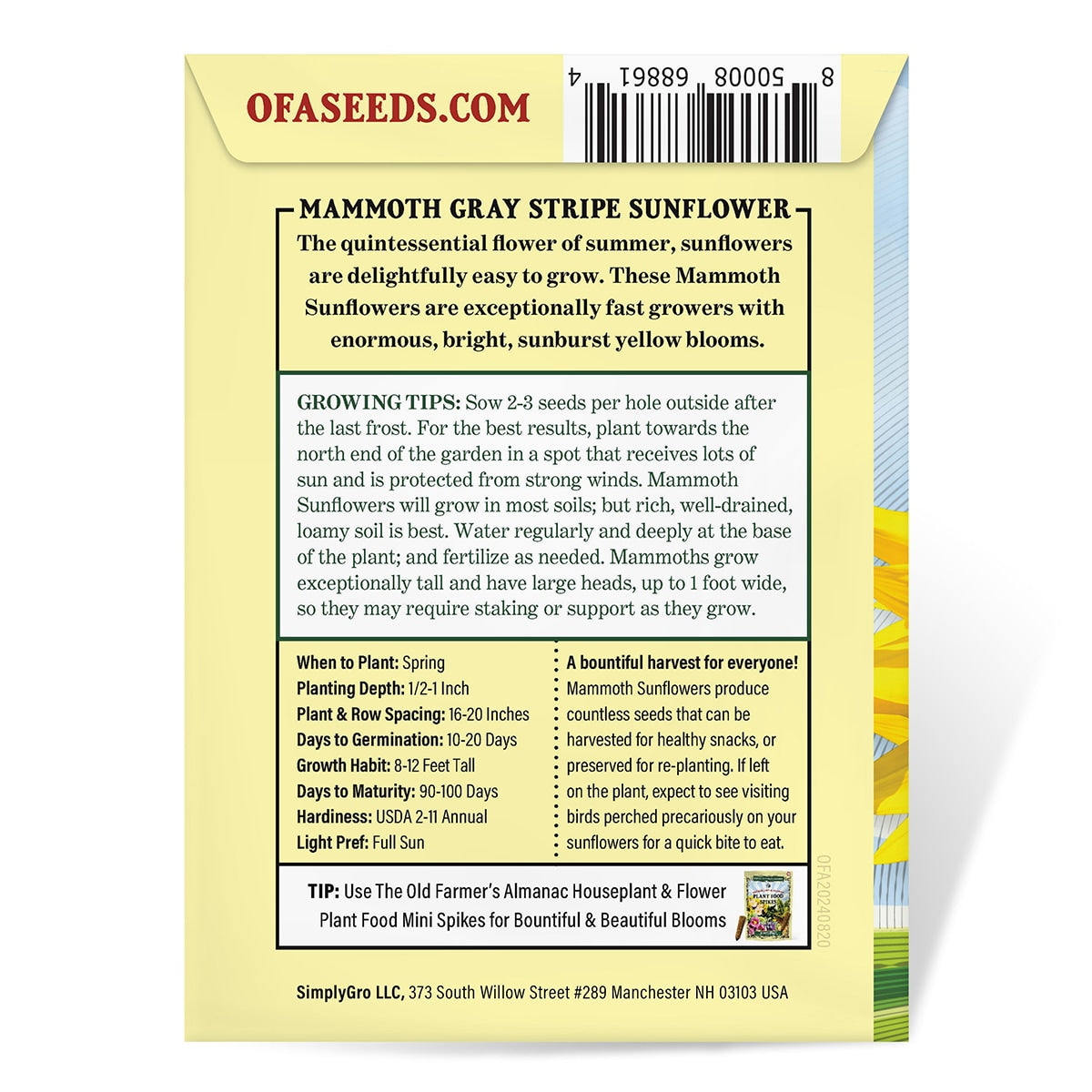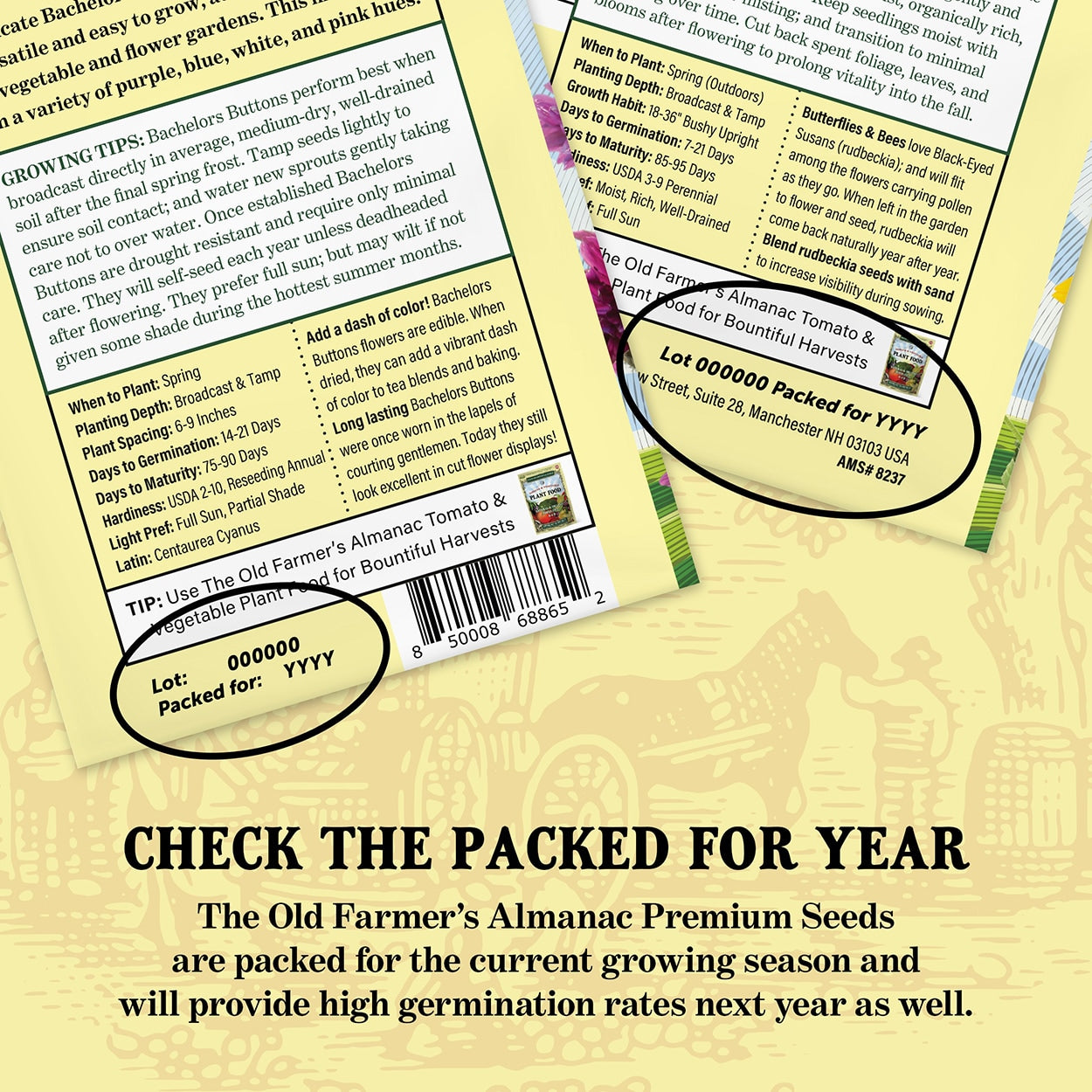Asterales
The Old Farmer's Almanac Mammoth Gray Strip Sunflower Seeds
The Old Farmer's Almanac Mammoth Gray Strip Sunflower Seeds
Couldn't load pickup availability
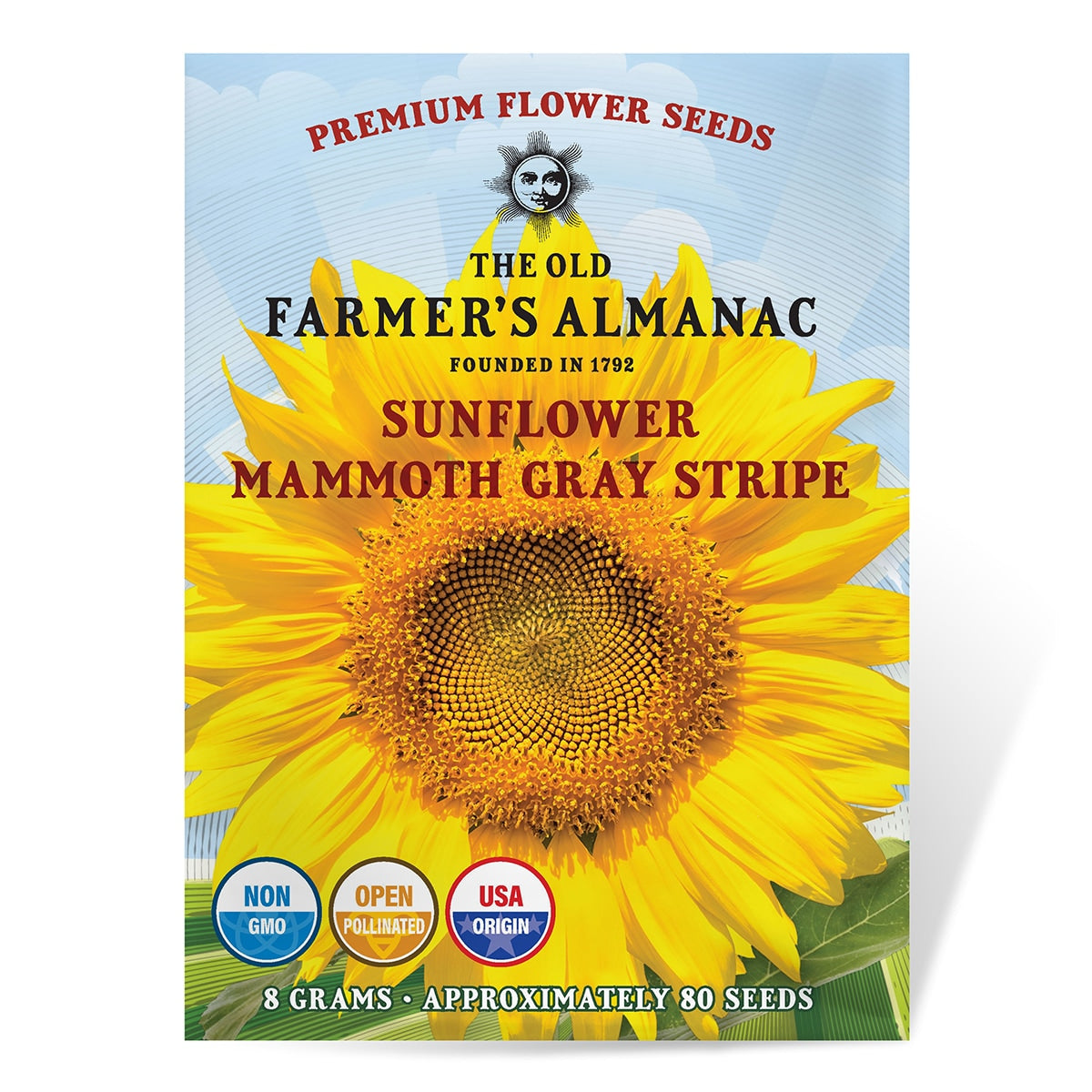
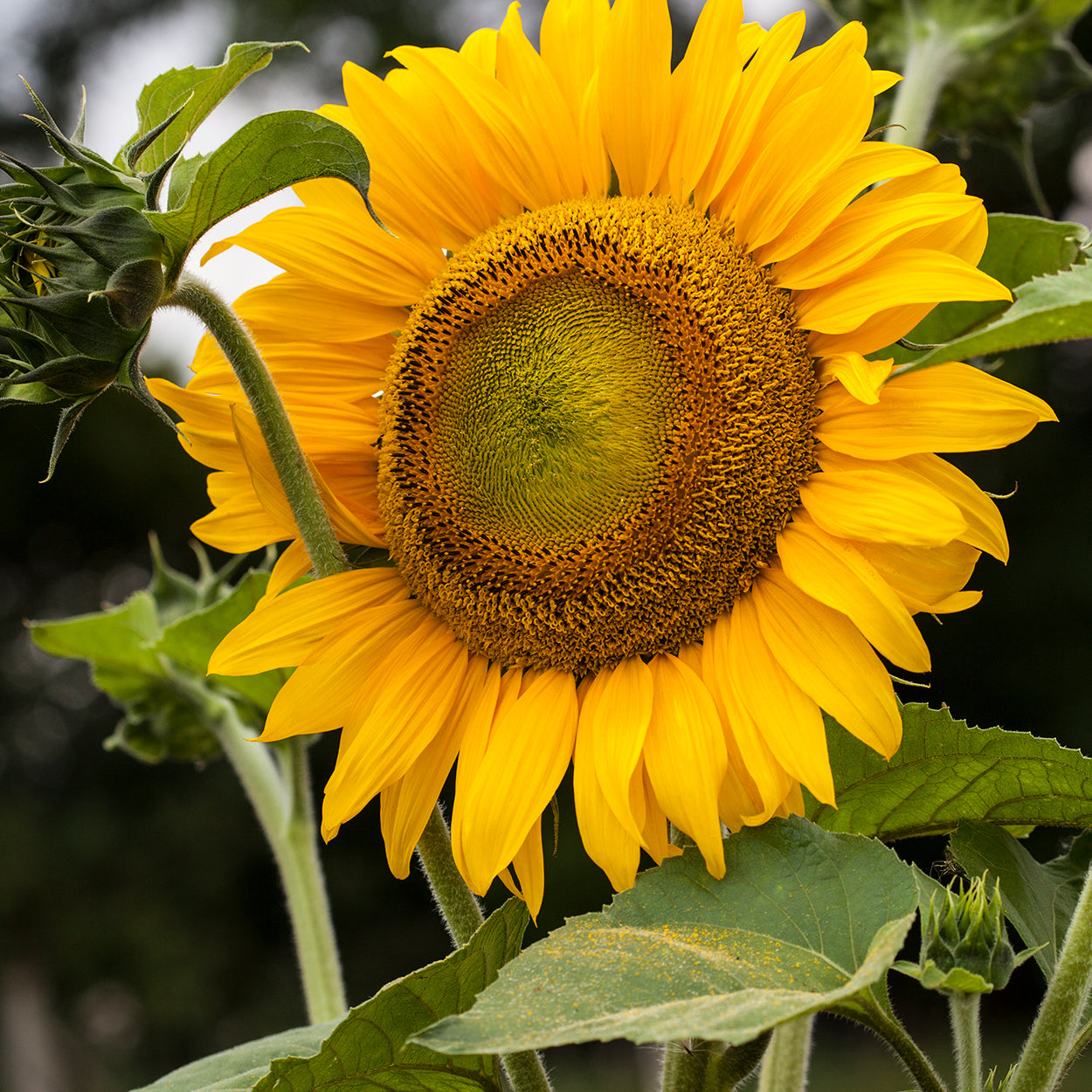
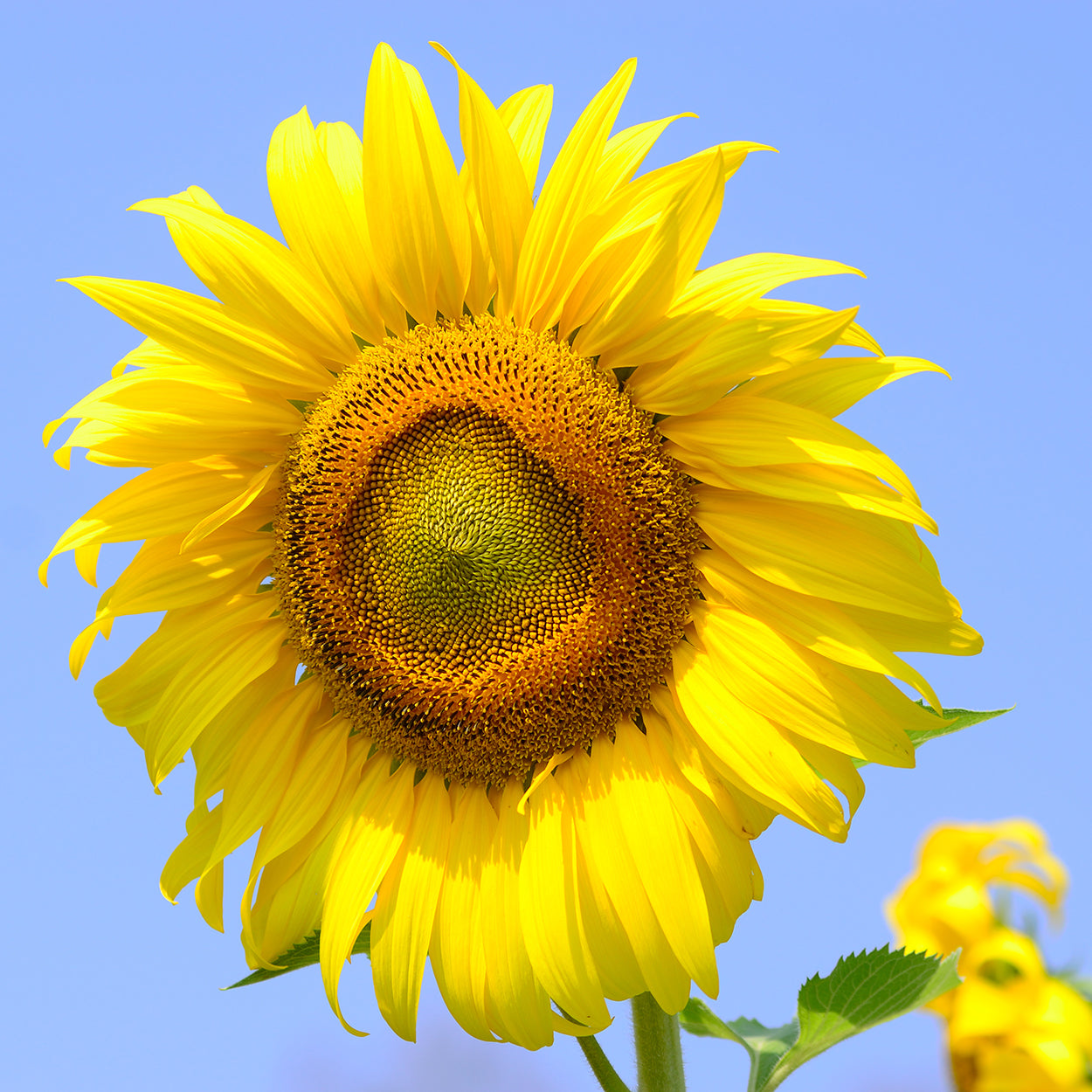
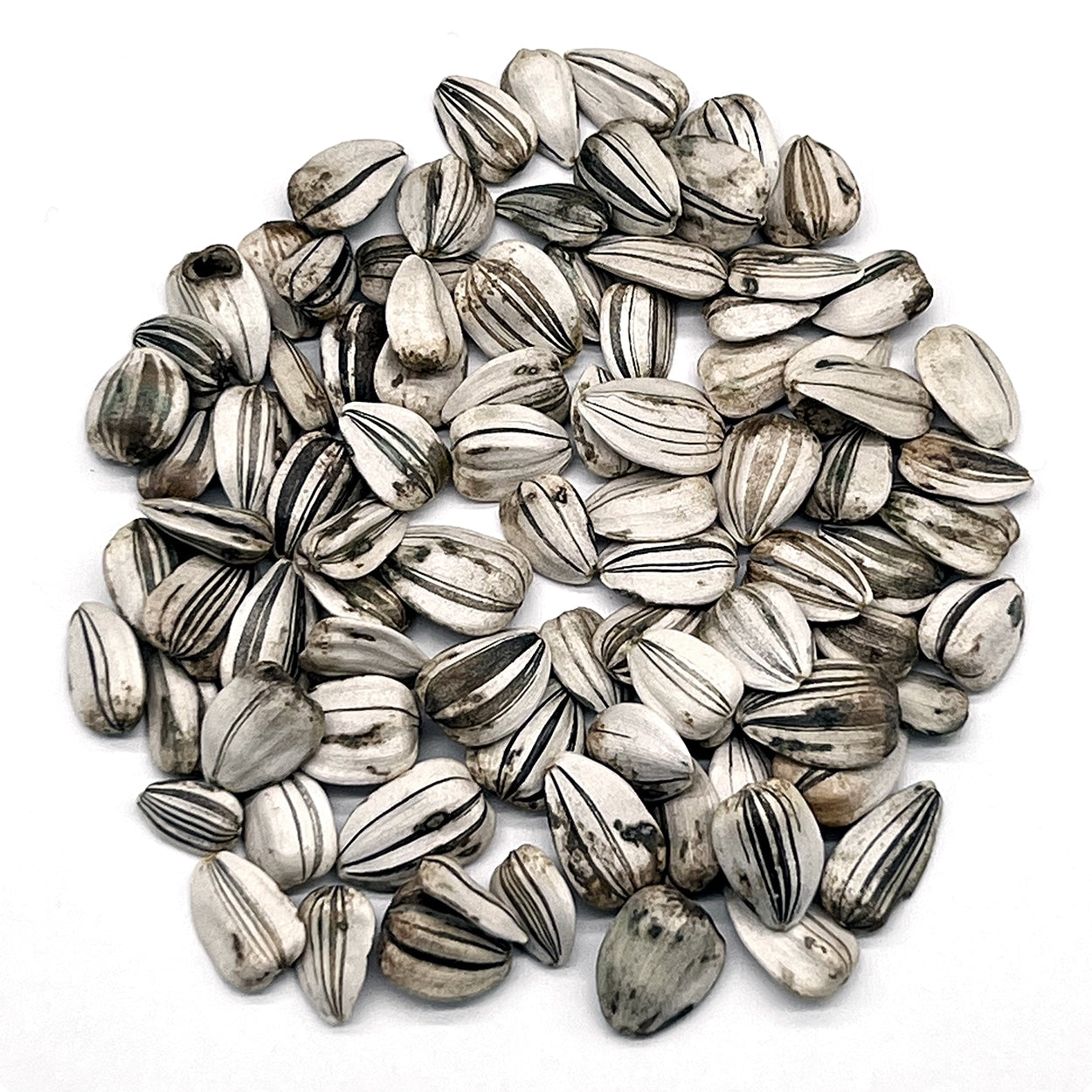
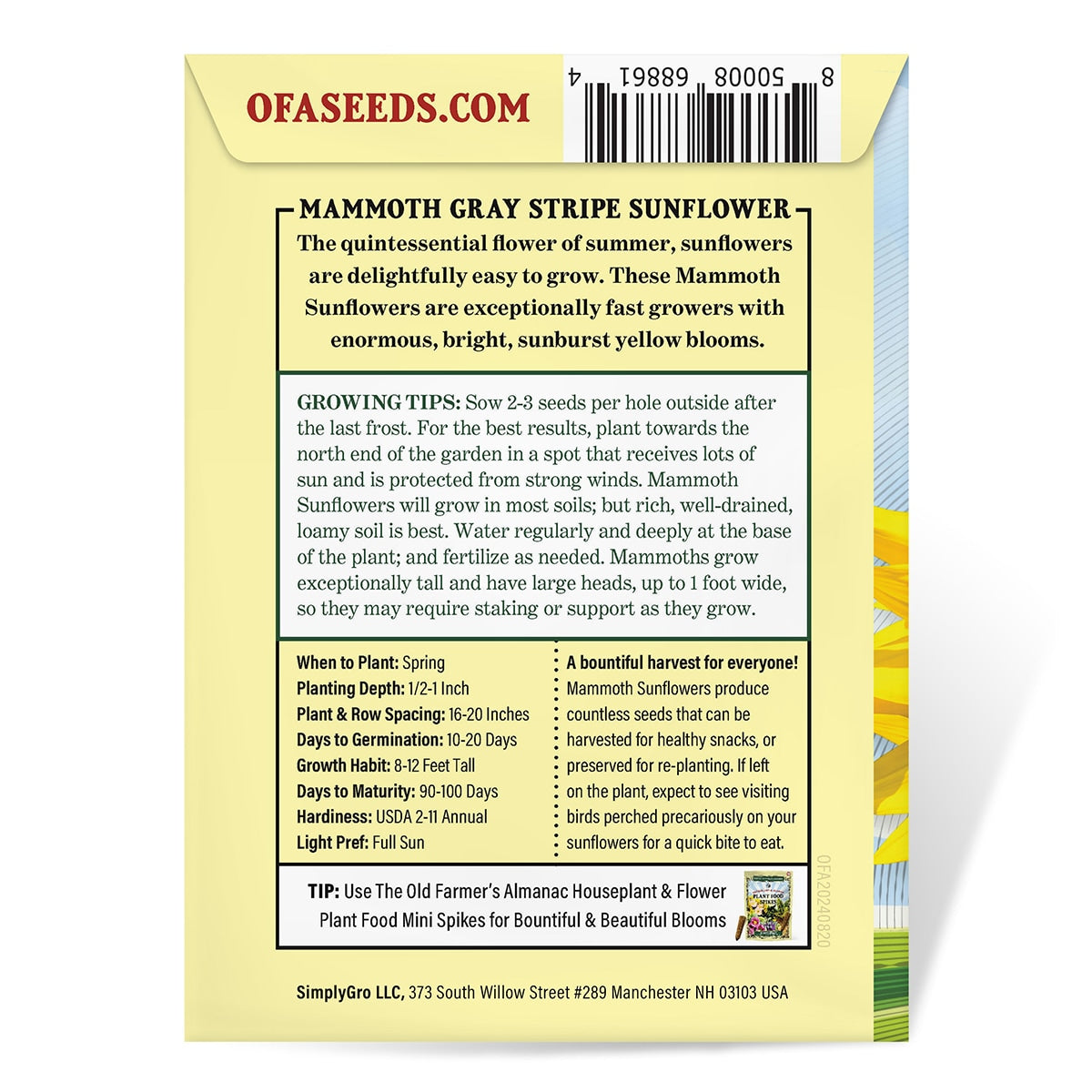

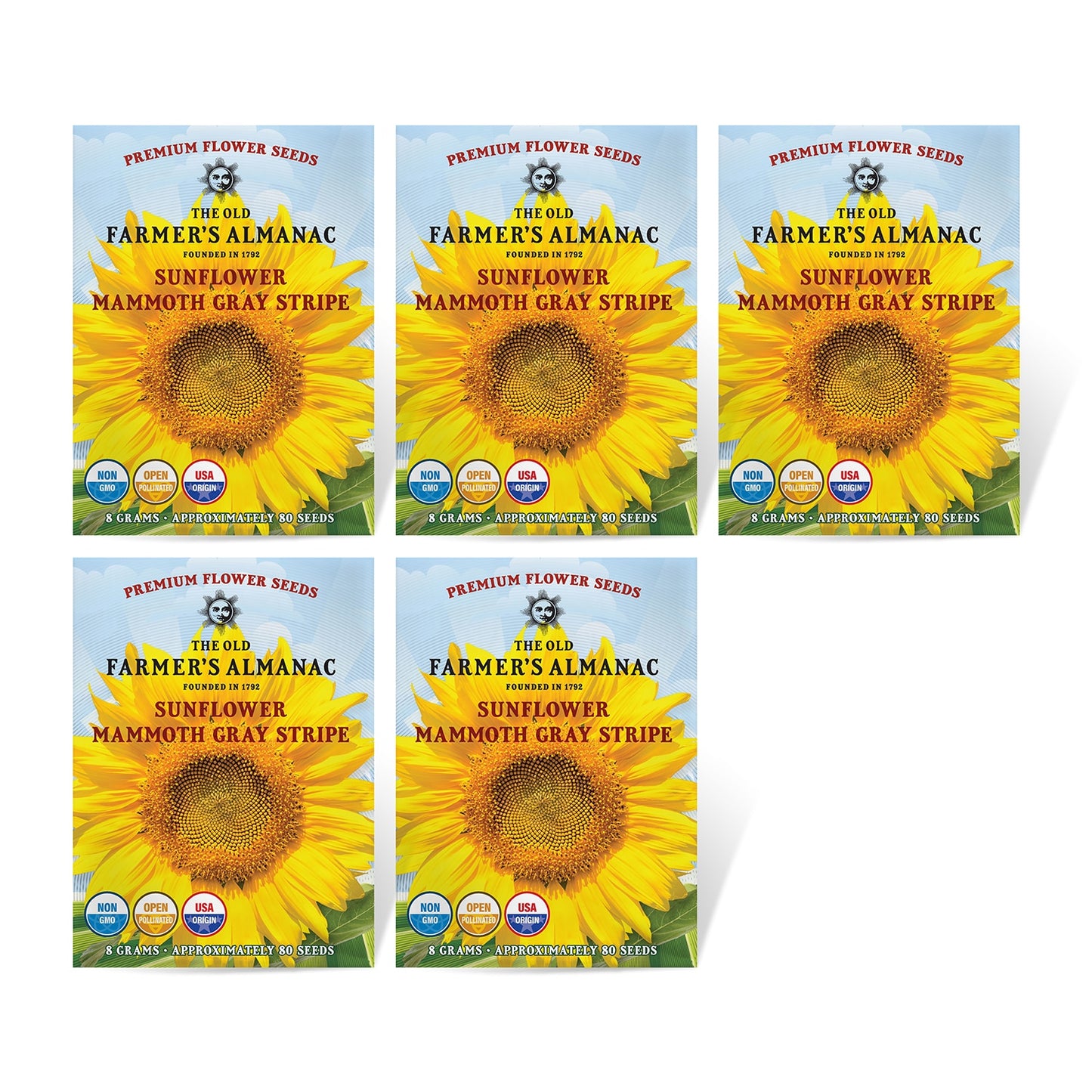
Collapsible content
DESCRIPTION
The quintessential flower of summer, sunflowers are delightfully easy to grow. These Mammoth Sunflowers are exceptionally fast growers with enormous, bright, sunburst yellow blooms. Premium, non-GMO, open pollinated Mammoth Gray Stripe Sunflower Seeds from The Old Farmer's Almanac have high germination rates and are proudly sourced from American farms.
Freshly Packed: These seeds are packed for the current growing season and will provide high germination rates next year as well.
Premium Packaging: All seeds from The Old Farmer’s Almanac are packaged in individually styled packets ideal for gifts, storage or immediate use. Each packet displays the flower, vegetable, plant or herb variety on the front with instructions and plant facts on the back.
GROWING TIPS
Sow 2-3 seeds per hole outside after the last frost. For the best results, plant towards the north end of the garden in a spot that receives lots of sun and is protected from strong winds. Mammoth Sunflowers will grow in most soils; but rich, well-drained, loamy soil is best. Water regularly and deeply at the base of the plant; and fertilize as needed. Mammoths grow exceptionally tall and have large heads, up to 1 foot wide, so they may require staking or support as they grow.
A bountiful harvest for everyone! Mammoth Sunflowers produce countless seeds that can be harvested for healthy snacks, or preserved for re-planting. If left on the plant, expect to see visiting birds perched precariously on your sunflowers for a quick bite to eat.
Wit & Wisdom: The tallest sunflower ever recorded was grown in Germany in 2014. It measured in at a stunning 30 feet and 1 inch tall! Read The Old Farmer's Almanac Sunflower Growing Guide!
- - - - -
A STEP-BY-STEP GUIDE TO HARVESTING GUIDE TO HARVESTING SUNFLOWER SEEDS
Sunflowers are becoming more and more popular among many home gardeners. They are easy to plant and grow and their large colorful blooms are very eye catching. Sunflower heads are loaded with seeds which attract many pollinators but are also a delicious snack for birds, squirrels and humans too!
Did you know you can actually harvest your Sunflowers seeds and re plant the following year? Let’s learn how.
STEP 1: MAKE SURE YOUR SUNFLOWERS ARE READY TO BE HARVESTED
There are a few ways to help determine whether or not your sunflowers are ready to be harvested; first their bright yellow head will start to fade and go dull in color, it’s petals will start to die off and wilt as well.
The most obvious sign to look for though happens to be on the back of the sunflower. The “calyx” better known as the back of the sunflower head will start to turn dark yellow to brown. When the calyx is no longer green, it’s a sign the sunflower is no longer sending energy to the head. As soon as this happens; the sunflower seeds can be harvested.
Once you’ve determined your Sunflower is ready to be harvested; cut the head from the stalk – leave about 5-8 inches of stalk behind the head.
To help the seeds dry faster; remove all leaves and hang the sunflower head in a dry protected area such as a porch or garage. The key to drying the sunflower head as fast as possible is leaving it in a space which has good air flow.
You’ll want to leave the Sunflower head here for roughly 2-3 weeks. You’ll know it’s ready when the Sunflower head is dark brown.
STEP 2: LET'S REMOVE THOSE SEEDS!
To remove the seeds, lightly scrape off any of the bud remnants on top of the Sunflower head. Once those are all removed; over a large bowl and wearing gloves rub the top of the seeds with your fingers to detach them from the Sunflower head.
STEP 3: PREP THE SEEDS FOR NEXT SEASON
Now that we’ve removed our seeds from the Sunflower heads; let’s get them ready for next season.
Rinse your seeds well with cold water then dry thoroughly. Prior to storing the seeds, you’ll want to make sure they are completely dried out. Leave them out on a counter on a paper towel or newspaper and dry for several hours or overnight. Once the seeds are completely dry, store them in an airtight container. Don’t forget to label each container if you’ve had multiple varieties of Sunflowers so you know what to expect next season. These containers should be stored in a cool dry place until ready to be planted.
TIP: Sunflower Seeds Can Also be Roasted for a Delicious Snack!
Soak seeds overnight in a salt water bath – ¼ cup of salt and 2 cups of water. Do not rinse seeds. Allow seeds to dry on a paper towel for about an hour. Then spread seeds in a thin layer on a cookie sheet and bake at 300 degrees Fahrenheit for 35 minutes. Once the seeds are done and cooled off; they can be enjoyed or stored in an airtight container for a couple of months. Enjoy!
Looks good.

